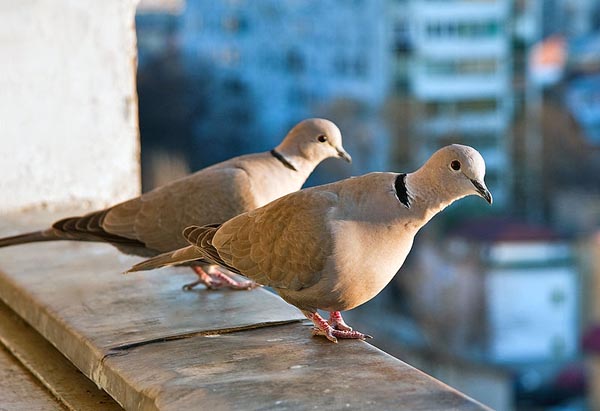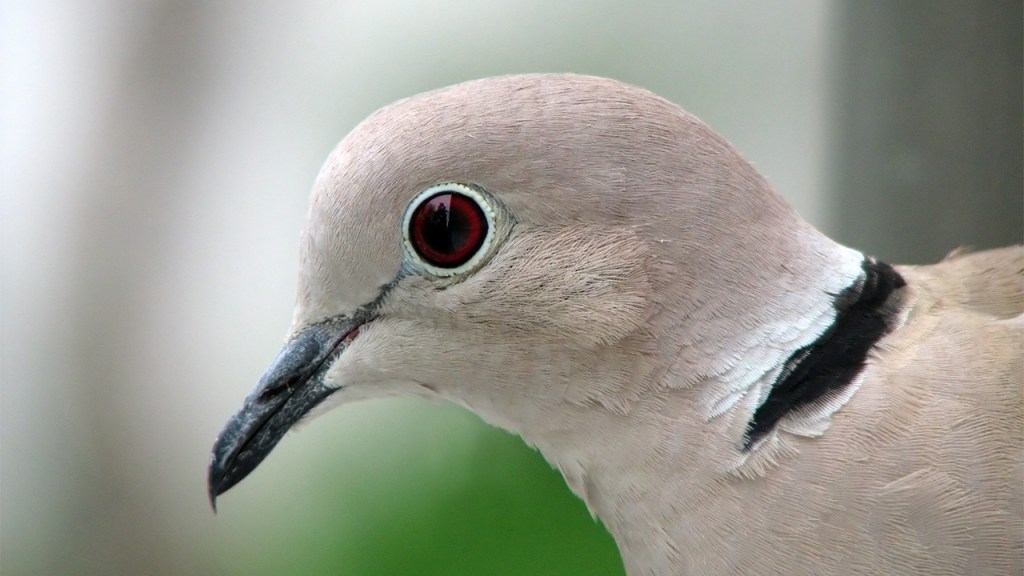The Great Backyard Bird Count (GBBC) — one of the largest citizen science initiatives in the world – annually documents a wide variety of bird population trends.
To my mind, one of the most interesting has been the dramatic spread of the non-native Eurasian collared dove across North America.
The GBBC asks citizen birders to watch an area for at least twenty minutes sometime during a four-day period in mid-February (this year’s count concluded yesterday), and record the birds they see.
Just ten years ago, seeing a Eurasian collared dove would have been a novelty. No more: the doves are now commonly reported by birders in most of the United States.
GBBC data tell the story of this rapid spread.
In the 1970s, the Eurasian collared dove was introduced to the Bahamas. By the early 1980s, the non-native birds made their way to South Florida, where they established populations. Then they began spreading north and west.
Their range appears to have expanded slowly at first. A look at GBBC reports from 1998 show a lot of sightings in Florida, with some birds reported in Texas, Alabama and Arkansas.
By 2001, the doves reached California.
Last year’s bird count results showed the Eurasian collared dove had colonized much of the country. It has not (yet) been reported in New England, but it has reached as far north as Alaska.
The GBBC’s video map dramatically illustrates this expansion.
In my state of Idaho, the doves were first recorded in 2005 by two backyard birders. In subsequent years, the bird was commonly reported in Idaho’s eastern corners. Last year, 132 GBBC participants reported 719 doves throughout the state.
I saw my first Eurasian collared dove in our backyard in 2008 – a banded bird that may have been an escaped pet. Last year, I began seeing the doves hanging around our neighborhood. This year was the first that I noted the species during my own participation in the Great Backyard Bird Count.
What’s going on here? Should conservationists be concerned about this spread?
Unlike some dove species, Eurasian collared doves aren’t migratory. However, they do readily expand into new suitable habitat. In fact, in their native Asia, Eurasian collared doves have been rapidly expanding their range as well – colonizing new countries every year.
The dove is one of those species that adapts well to humanity. The trees, power lines and bird feeders of suburbia provide perfect habitat. The Eurasian collared dove is almost always seen near homes and farms, not unbroken forest or prairie.
Research indicates it is not adversely affecting native mourning doves or other birds. It may simply be filling a new habitat niche created by suburban habitat. But it is still early in the spread.
Could Eurasian collared doves become an invasive threat? That remains to be seen.
Citizen science projects like the GBBC and another citizen initiative, Project FeederWatch, will help scientists continue to track the spread and impacts of the species. It will be interesting to learn what this year’s count found about Eurasian collared doves. If past years are any indication, their populations will likely have grown and spread into new areas of the country.
Have you seen Eurasian collared doves in your area? Have you noted other trends during your backyard bird counts? Let us know what you’re seeing!





These have become abundant here in the Willamette Valley (Oregon). I saw the first one 4 years ago, now they are everywhere. It seems that I see fewer Mourning Doves as well.
Here in Emmett (Southwestern Idaho) these annoying Eurasian doves have overtaken the local dove population. They are everywhere. On any given street in the county they sit atop the telephone poles, tress, love to poop on vehicles.
There are literally many thousands here in Gem County. (May 2014)
I am a bird lover, but their incessant “whining” throughout the day makes it virtually impossible to nap.
I loathe these creatures with a passion !!!
ive these nesting in my garden in uk are these classed as vermin
April 25 2014 Spotted a white dove in Virden Mb. Looks like it was hanging out with a mourning dove.
We live in Gilchrist County, FL. We had two of these birds come to our feeders last month, and this is the first time we have ever seen them in 10 years We have white-winged , rock, and mourning also. What a shock it was to see these all white doves. They are beautiful, even tho it’s an invader.
We have a pair of Collared Doves here near Vernon B.C. this winter. It’s my first winter in BC, so was only a bit surprised the first time I saw one. Moved from Ontario & had never seen them there……lots of Mourning Doves tho. I have only seen the one pair so far, and only 1 Mourning Dove here this winter – they all come to my “All day bird buffet & spa” as my grandson calls it! (Heated bird bath! lol) – Have certainly seen lots of ‘new’ birds since we moved here last July.
Very commonly feeding below my feeders in Tampa, Fl. They always seem to cry/ sing when they start to fly away (startled or not). They are almost always in pairs.
I first noticed them in Venice Florida back in the 90’s. Now they are one of the most common birds in the neighborhood.
saw a pair in our yard, trees, feeder lately – especially when it was really cold (Denver). Hope they don’t displace the doves that arrive later!
Have not seen them in Colts Neck, NJ (monmouth County)
where have the others seen them?
I have these doves feeding in my yard and feeders here in Springfield, Missouri.
I remember seeing them in Pheonix several years back
I’ve got probably 2 dozen of the damned things that visit my yard now. They’ve pushed out all the mourning doves I used to have coming to feed on the ground under my feeders. I hate them.
I do to, wonder what they taste like? will let you know
They taste supreme!
I have had as many as 30 at my feeders during the last snow fall!!
Starting around 4 years ago, I noticed a pair in the back yard. Now I see anywhere between 2 to 13 at a time. In spite of being prey for the Cooper’s and Red Shouldered hawks in the neighborhood, they continue to multiply. I love them, and love their calls.